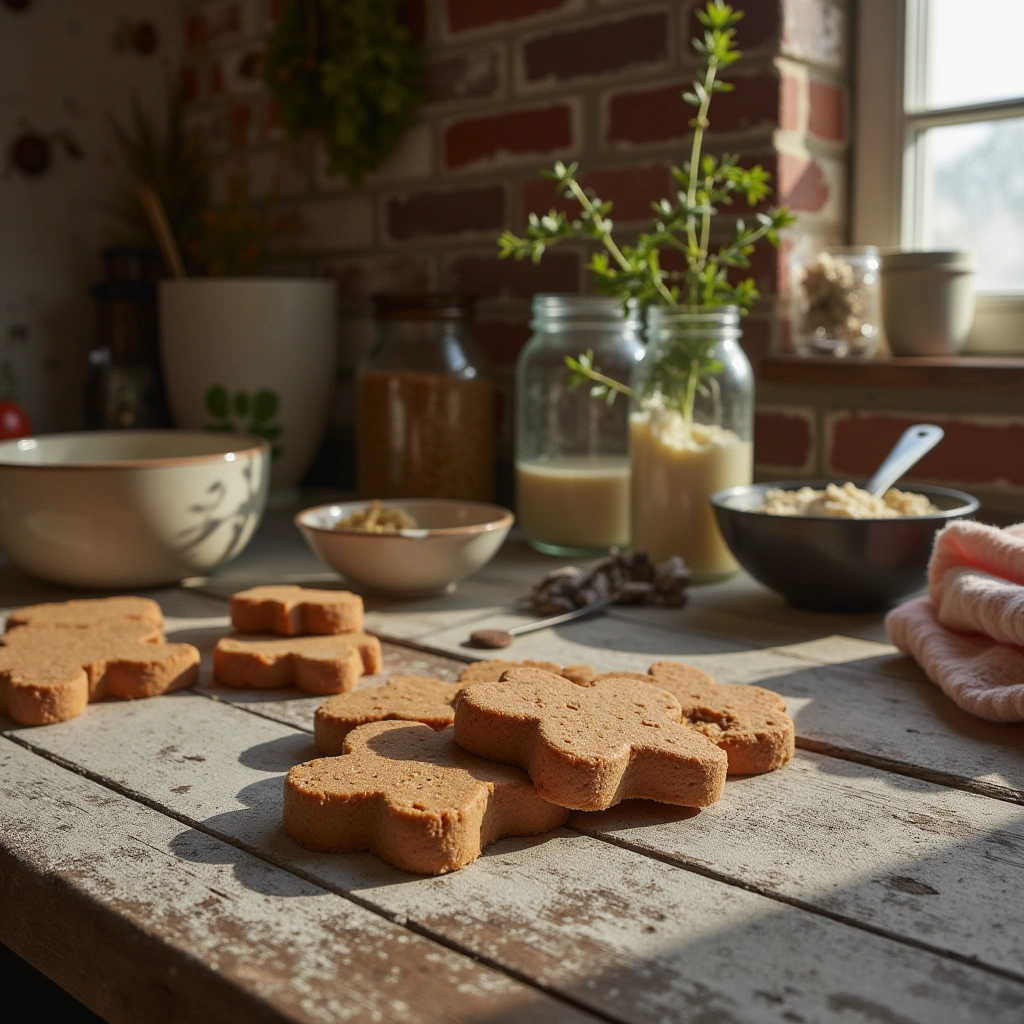Ever wondered how to whip up healthy, tasty treats for your furry friend right at home? If you’re looking for a simple, nutritious, and delicious recipe, homemade peanut butter carrot dog treats are an excellent choice. These treats are not only easy to make but also packed with wholesome ingredients that your pup will love. In this guide, I’ll walk you through everything you need to know—from selecting the best ingredients to baking tips and variations—so you can spoil your dog with confidence and care.
Why Make Your Own Dog Treats?

Making treats at home isn’t just fun; it gives you control over what your dog is eating. Store-bought treats can contain preservatives, artificial flavors, and fillers that aren’t ideal for your pet’s health. Homemade treats, on the other hand, are fresh, customizable, and often more affordable.
Benefits of homemade dog treats:
- Healthier ingredients: No artificial additives or preservatives.
- Customization: Tailor recipes to your dog’s dietary needs.
- Trust: Know exactly what’s going into your dog’s snacks.
- Bonding: Cooking together strengthens your bond.
The Perfect Peanut Butter Carrot Dog Treats

These treats combine the creamy richness of peanut butter with the natural sweetness and crunch of carrots. They’re soft enough to be enjoyed by dogs of all ages, yet firm enough for training or daily snacking.
What makes these treats special?
- Nutritious: Carrots are rich in vitamins A, C, and fiber.
- Protein-packed: Peanut butter provides healthy fats and protein.
- Easy to digest: Free from additives and artificial sweeteners.
- Versatile: Perfect for training, rewards, or just because.
Materials Needed

Before starting, gather all ingredients and tools to streamline the process. Here’s a detailed table for your reference:
| Item | Quantity / Size | Notes |
|---|---|---|
| Whole Wheat Flour | 2 cups | Use gluten-free flour if your dog is sensitive |
| Carrots | 1 cup, grated | Fresh, organic preferred |
| Peanut Butter | ½ cup | Unsweetened, xylitol-free (xylitol is toxic to dogs) |
| Eggs | 2 large | For binding and moisture |
| Water | ¼ cup (or more, as needed) | To adjust dough consistency |
| Baking Powder | 1 teaspoon | Optional, for slight rise |
| Optional Add-ins | Small handful of oats or flaxseed | For added fiber and nutrients |
Tools Needed:
- Mixing bowls
- Grater
- Measuring cups and spoons
- Rolling pin
- Cookie cutter or knife
- Baking sheet
- Parchment paper or silicone baking mat
- Cooling rack
Step-by-Step Guide to Making Peanut Butter Carrot Dog Treats

Step 1: Prepare Your Ingredients
- Grate the carrots finely to ensure even distribution and easy mixing.
- Measure out all ingredients accurately for best results.
Step 2: Mix the Wet Ingredients
In a large mixing bowl, combine:
- Peanut butter
- Eggs
- Water
Stir until smooth. The mixture should be creamy and easy to blend.
Step 3: Add the Dry Ingredients
Gradually add the flour and baking powder to the wet mixture. Mix well until a dough forms. If the dough is too sticky, sprinkle in a little more flour; if too dry, add a teaspoon of water at a time.
Step 4: Incorporate the Carrots
Fold in the grated carrots evenly throughout the dough. If using optional ingredients like oats or flaxseed, mix them in at this stage.
Step 5: Roll Out the Dough
- Lightly flour your work surface to prevent sticking.
- Roll out the dough to about ¼ inch thickness.
- Use cookie cutters or a knife to cut into desired shapes—bones, circles, or squares.
Step 6: Bake
- Preheat your oven to 350°F (175°C).
- Line your baking sheet with parchment paper or a silicone mat.
- Place treats evenly spaced on the sheet.
- Bake for 15-20 minutes, or until they turn golden brown and are firm to the touch.
Step 7: Cool and Store
- Let the treats cool completely on a wire rack.
- Store in an airtight container at room temperature for up to a week, or refrigerate for longer shelf life.
- For longer storage, freeze treats in a sealed bag for up to 3 months.
Tips for Success

- Use natural peanut butter: Always check labels to ensure no added sugars or artificial sweeteners.
- Adjust moisture as needed: Different flours absorb water differently.
- Custom shapes: Use fun cookie cutters to make treats more appealing.
- Test for allergies: Introduce new treats gradually and observe your dog for any adverse reactions.
Common Mistakes and How to Avoid Them

| Mistake | Solution |
|---|---|
| Using xylitol-laden peanut butter | Always verify ingredients; xylitol is highly toxic to dogs. |
| Overbaking treats | Keep an eye on the clock; overbaked treats become hard and crumbly. |
| Not rolling dough evenly | Use a consistent thickness for uniform baking. |
| Adding too much water or flour | Add small amounts gradually; dough should be pliable but not sticky. |
| Ignoring ingredient sensitivities | Use gluten-free or hypoallergenic alternatives if needed. |
Variations You Can Try

- Sweet Potato Version: Substitute carrots with mashed sweet potatoes for a different flavor and added nutrients.
- Pumpkin Treats: Add a tablespoon of canned pumpkin for extra flavor and fiber.
- Cheesy Twist: Mix in a small amount of shredded cheese (for dogs without dairy sensitivities).
- Herb Infused: Add a pinch of parsley or basil for a fresh aroma.
Final Thoughts

Making peanut butter carrot dog treats at home is a rewarding way to pamper your pup while ensuring they’re eating healthy ingredients. These treats are easy to customize, affordable, and a fantastic way to show your furry friend some love. Remember to always choose safe ingredients, avoid harmful additives, and store treats properly to keep them fresh.
Now, get into the kitchen and whip up some delicious, nutritious treats for your best friend. Happy baking!
P.S.: Always consult your veterinarian before introducing new treats into your dog’s diet, especially if they have allergies or health conditions.

